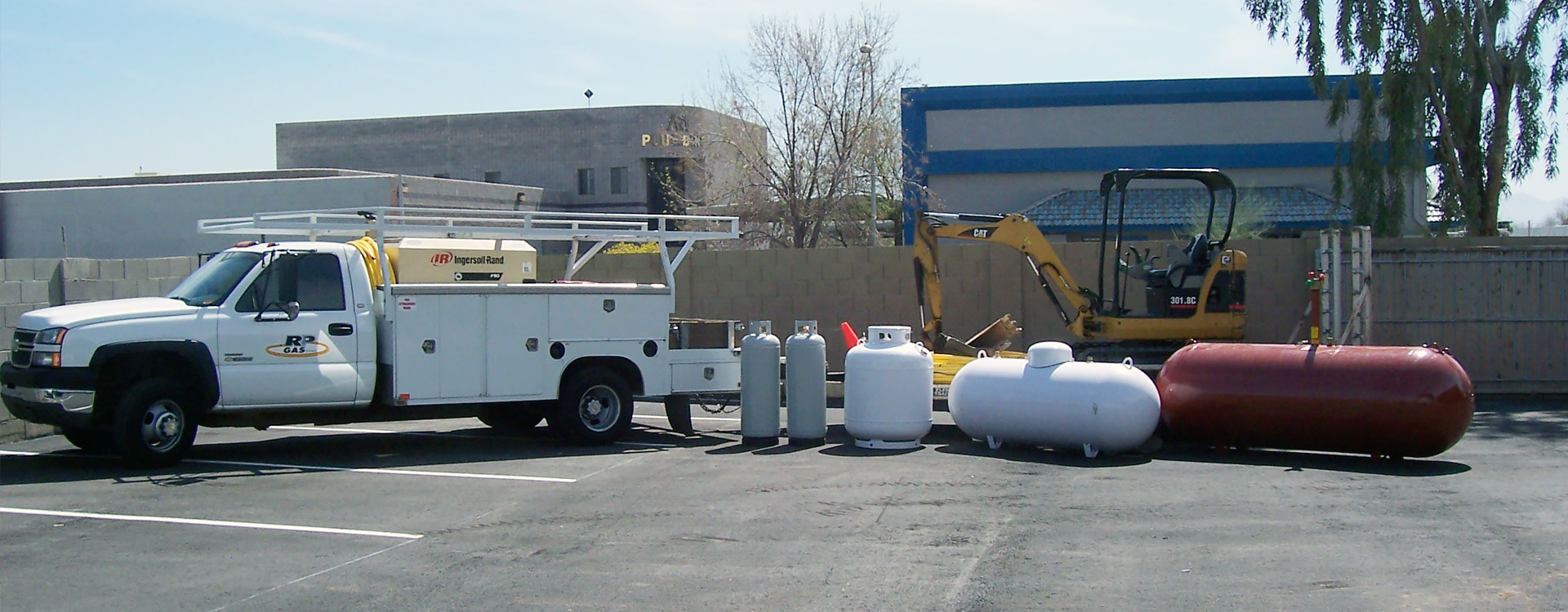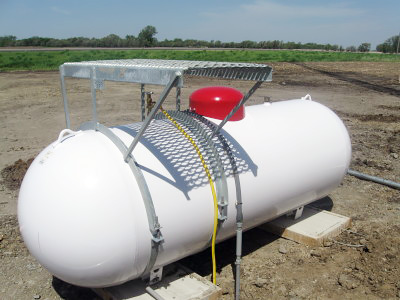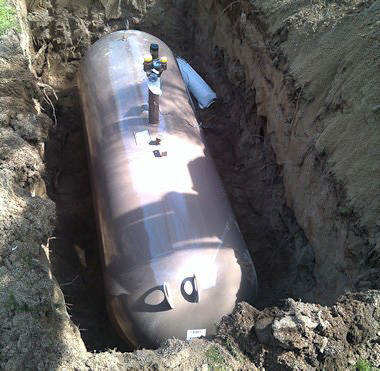If you plan to have a propane tank installed on your property, you might ask yourself this all-important question: above or below ground? Of course, many factors and considerations can make one option better for you. And this article will outline them for you so you can make a well-informed decision about your propane tank.
Propane Tanks: The Basics
Let’s start with a brief overview of propane tanks. These large containers store and distribute liquid propane gas.
Propane is widely used in homes as an energy source for things like:
- Home heating
- Water heating
- Cooking
- Clothes drying
- Generators
Propane tanks come in several sizes, ranging from 100-pound tanks used for grills and other small appliances to 1,000-gallon tanks that can power entire homes or commercial buildings for long periods.
Now let’s move on to how an above-ground versus an underground tank works.
Above Ground Propane Tanks
These tanks are the most common type of propane tank. They typically sit on a concrete pad on your property or are mounted to a wall or other structure.
Above-ground installation is usually more straightforward and less expensive than underground installation. Still, it also has some drawbacks. We’ll cover those in a moment.
Underground Propane Tanks
Homeowners who want to keep them out of sight while providing easy access for delivery trucks tend to prefer this option.
Underground propane tanks must be buried deep enough (typically at least 18-24 inches) beneath the soil’s surface to ensure compliance with local regulations and codes. To deter rust and corrosion, underground propane tanks must have cathodic protection. This protection method uses an external source to apply a DC electrical current to the propane tank, which prevents corrosion reactions from occurring.
Above vs. Below Ground Propane Tanks: PROS and CONS
To help you make the best decision for your property, we’ve broken down some pros and cons of each tank type.
Above-ground propane tanks: PROS
These points explain the appeal of above-ground tanks for some homeowners:
- Easy to install
- Less expensive than underground tanks
- Visible, which makes it easier for your propane supplier to find them
Above-ground propane tanks: CONS
Of course, above-ground tanks have some potential drawbacks as well:
- It can be an eyesore on your property
- Take up more space
- The potential risk of damage from wind, hail, or other weather conditions
Underground propane tanks: PROS
Now let’s take a look at the pros of below-ground tanks:
- Discreet and less visible than above-ground tanks
- Better protected from harsh weather conditions like wind, hail, snow, and extreme heat
- Safer in the event of a propane leak
(Find out what to do in a natural gas emergency here)
Underground propane tanks: CONS
And here are some drawbacks to consider with underground tanks:
- It can be more expensive to install due to the need for excavation work.
- Requires rust and corrosion prevention methods such as cathodic protection and coatings.
- Tougher for your propane provider to locate in an emergency
View our complete inventory of Propane Tanks.
Why is an Underground Propane Tank Safer?
We mentioned that an underground tank is safer in the case of a propane leak. But why?
It’s all about the ground cover. If a propane tank leaks, the gas has nowhere to go but up when it’s above ground.
But if it’s underground, the soil can act as natural insulation and help disperse the gas more safely away from your home or nearby structures. This makes an underground installation a much better choice for safety in certain circumstances.
If a propane tank is above ground, the leaking propane will be released into the air—this could result in a fire. But with underground tanks, the propane leaks into the soil or water underground. Then, it’s quickly absorbed and dissipated in the ground rather than the air.
Naturally, there are benefits and drawbacks to going with either choice. Ultimately, deciding which type to install should consider your specific needs and preferences.
How to Bury a Propane Tank
Underground propane tanks are often the most appealing option for homeowners. After all, who wouldn’t want an energy source out of sight and protected from the elements?
But before you dive into burying your tank, there are some critical steps to take.
First, you should consult propane piping professionals before starting the installation process. Experienced professionals will know what safety measures to take and ensure your tank is properly buried per local regulations and codes.
Once you have a professional on board, they will typically help you select a suitable spot for the tank.
Then, they will:
- Mark out an area of appropriate size
- Excavate the soil to make room for the tank
- Level the base of the hole
- Install, backfill or gravel around it
- Fill up any voids with sand or soil compaction material
Finally, they’ll perform a final grade to even out the surface.
The above steps are just some of the basic requirements for burying a propane tank—for more detailed instructions, give the team at RP Gas Piping a call!
We also talk more about how to bury a propane tank here.
Final Thoughts on Propane Tanks: Above or Underground
Now that we’ve broken down the pros and cons of above-ground and underground propane tanks, you can decide which type is best for your home.
It’s important to remember that regardless of your choice, you should always consult city codes and hire a professional propane piping company to help with all aspects of the installation. With the proper preparation and assistance, you can enjoy all the benefits of your new energy source while keeping safety at the forefront.
If you require natural gas in Arizona, contact RP Gas Piping today so we can help you get started. We look forward to hearing from you!
Did you learn a lot about Propane from this article?
Here are three more to read next:




